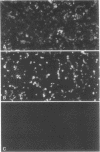Abstract
We previously reported that purified alpha1 chains of type 1 chick skin collagen induce platelet aggregation. We now describe immunological and biochemical evidence that the peptide binds to intact platelets as an early event in the induction of platelet aggregation and the release reaction. Antibody against alpha1 (I) was obtained by immunizing rabbits with complete Freund's adjuvant mixed with purified alpha1. Immunofluorescence studies showed that alpha1(I)-treated platelets exhibited strong immunofluorescence. The intensity of fluorescence was markedly decreased by the pretreatment of platelets with alpha1-CB5 and glucosylgalactosylhydroxylysine. Dose-response curves of platelet aggregation induced by alpha1 and the binding of alpha1 by washed intact platelets are correlated. The biochemical studies showed that the binding of the alpha1 chain to washed intact platelets was platelet concentration and temperature dependent, and that it reached a maximum in 10 min. The process was reversible and specific, with an association constant of 1.7 muM. The inhibitor of alpha1-induced platelet aggregation, glucosylgalactosyl hydroxylysine, inhibited the alpha1 binding. These results suggest that alpha1(I) chains bind to specific receptor site(s) on platelet membranes to trigger aggregation and the release reaction.
Full text
PDF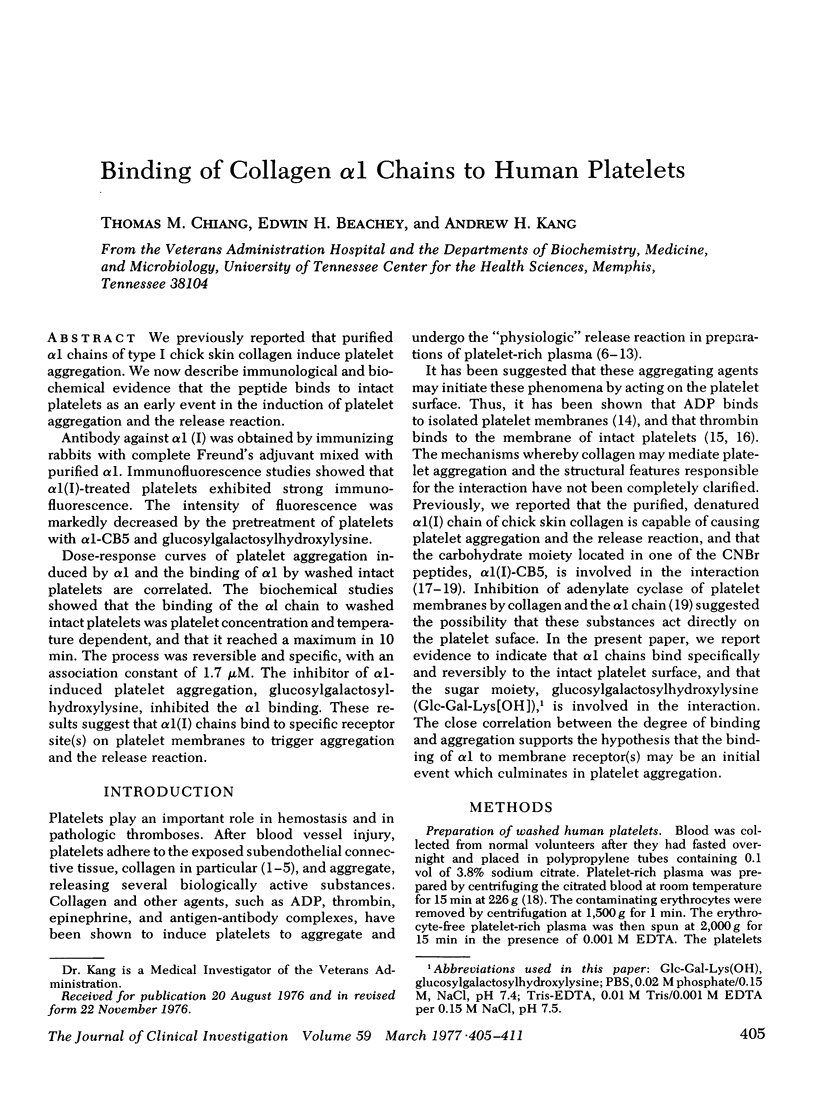
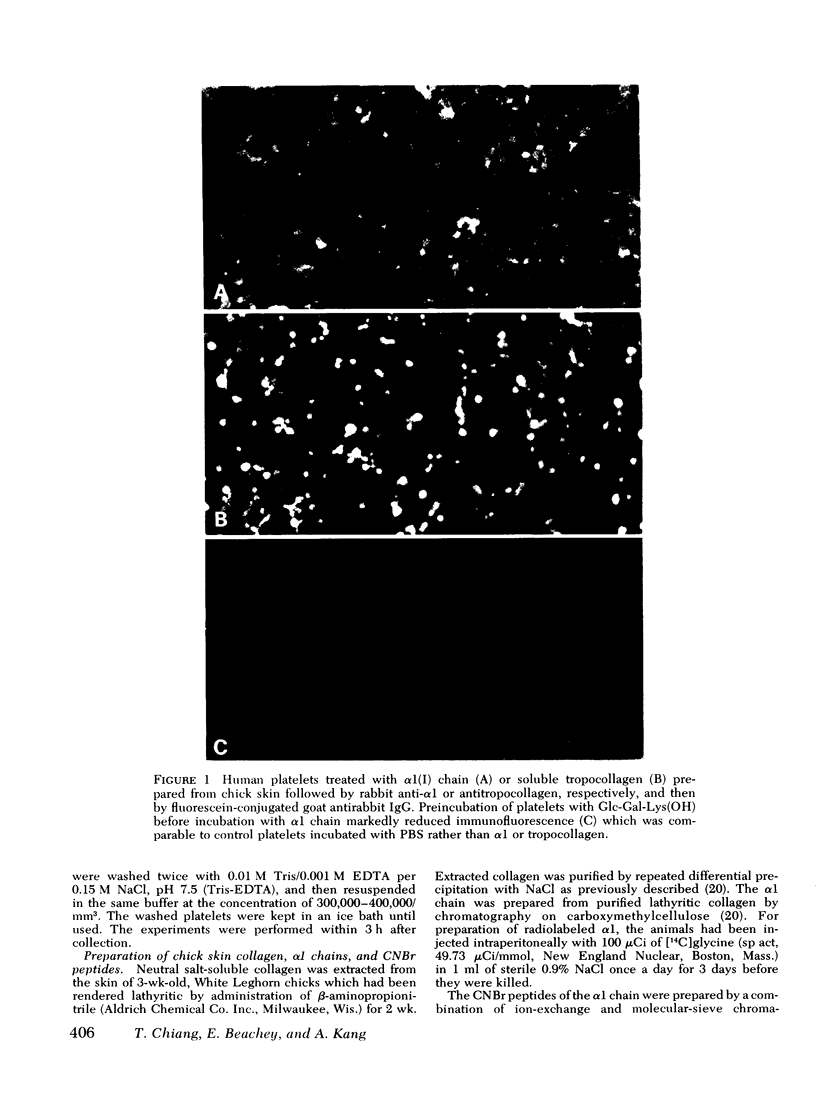
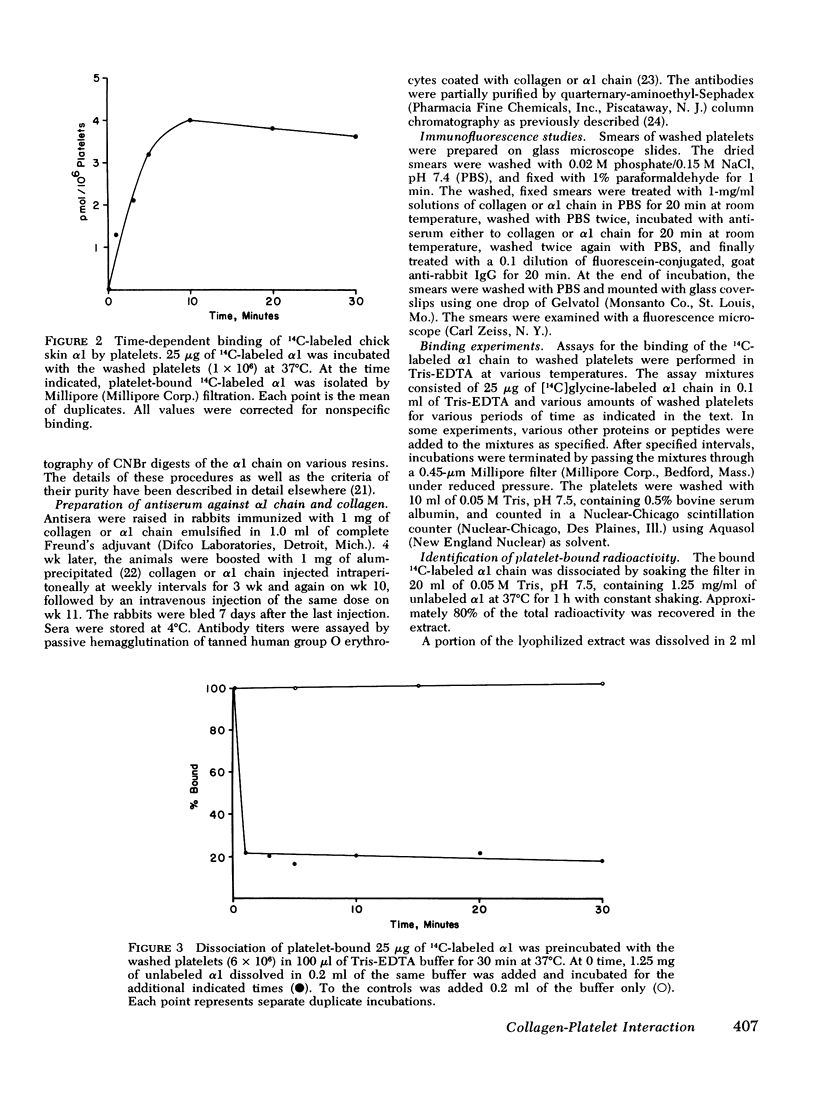
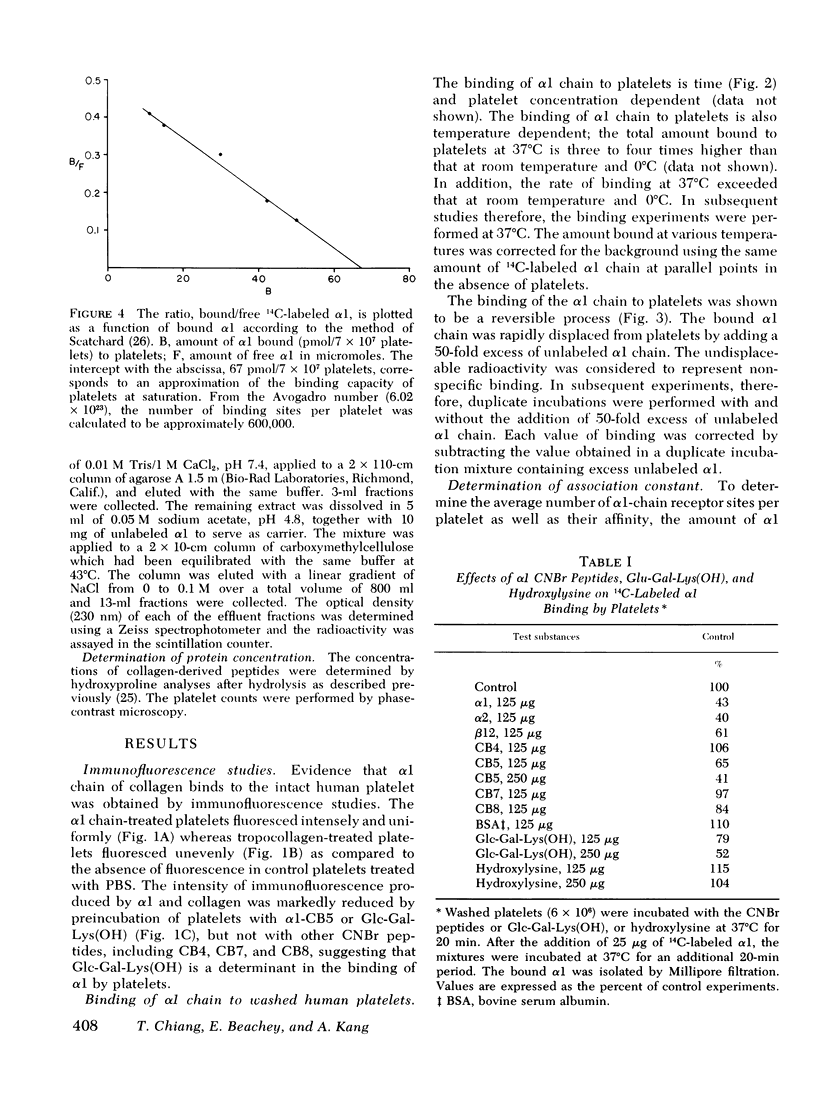
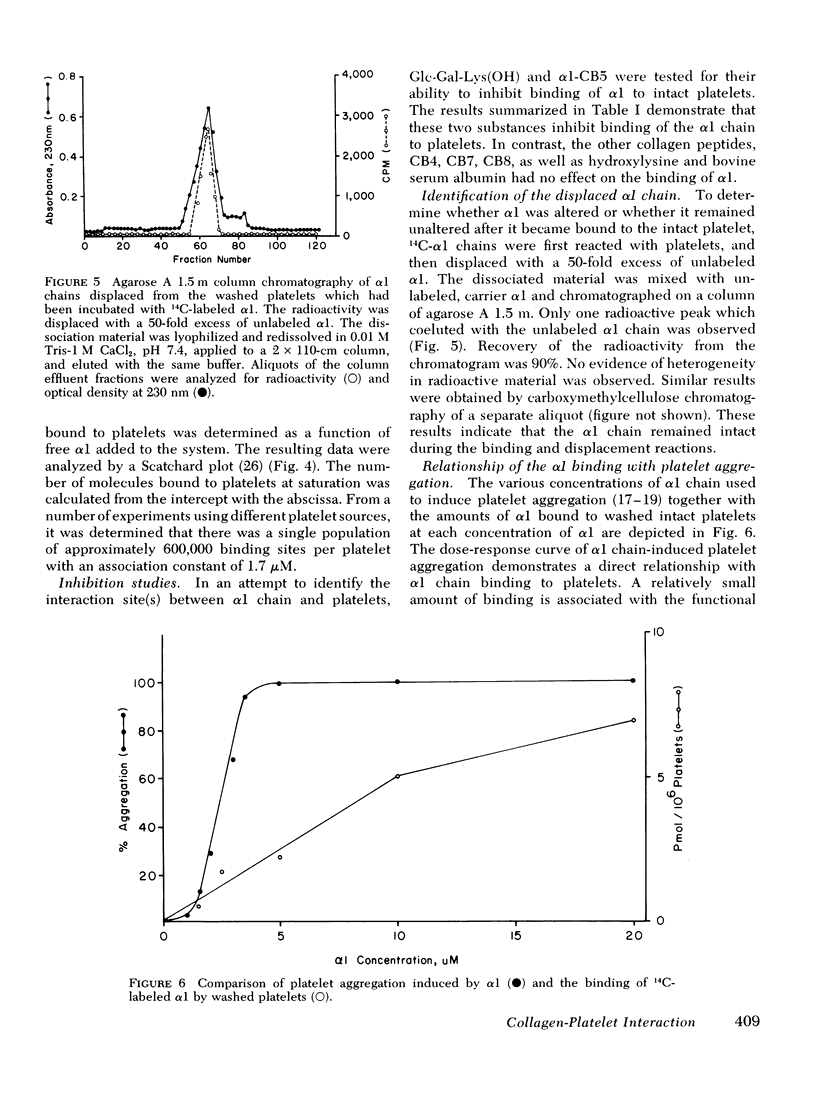
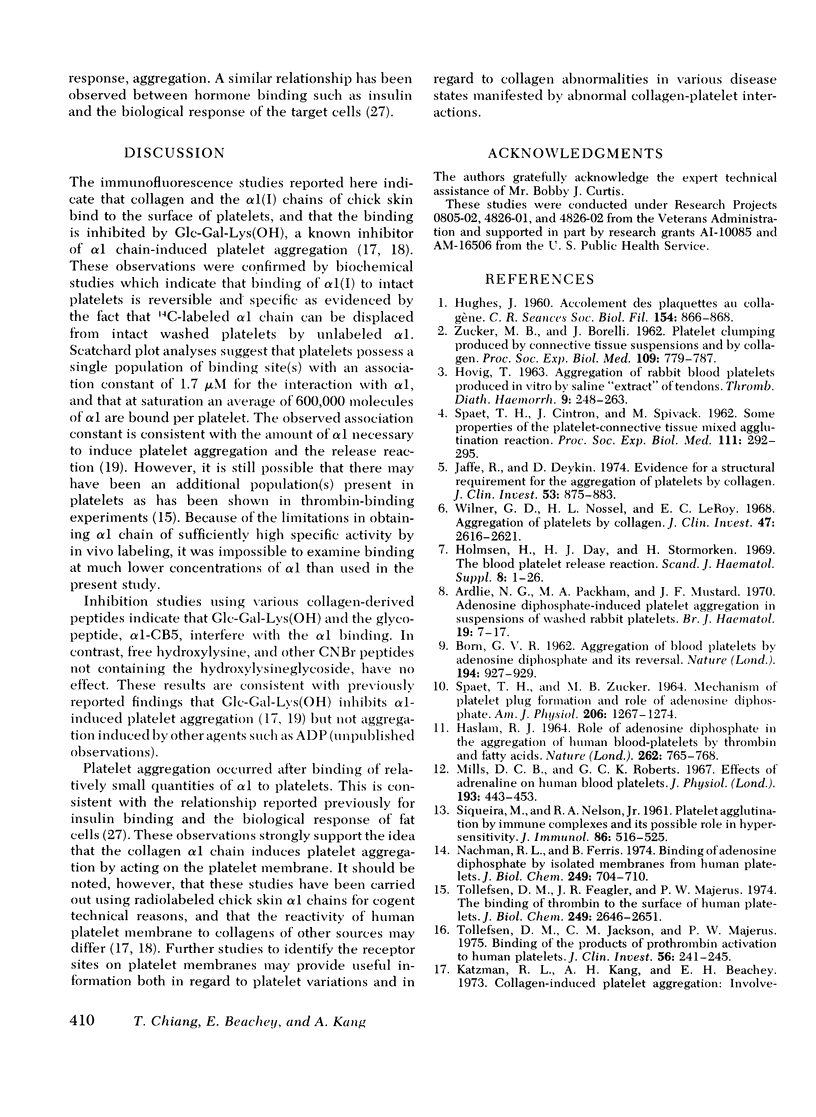
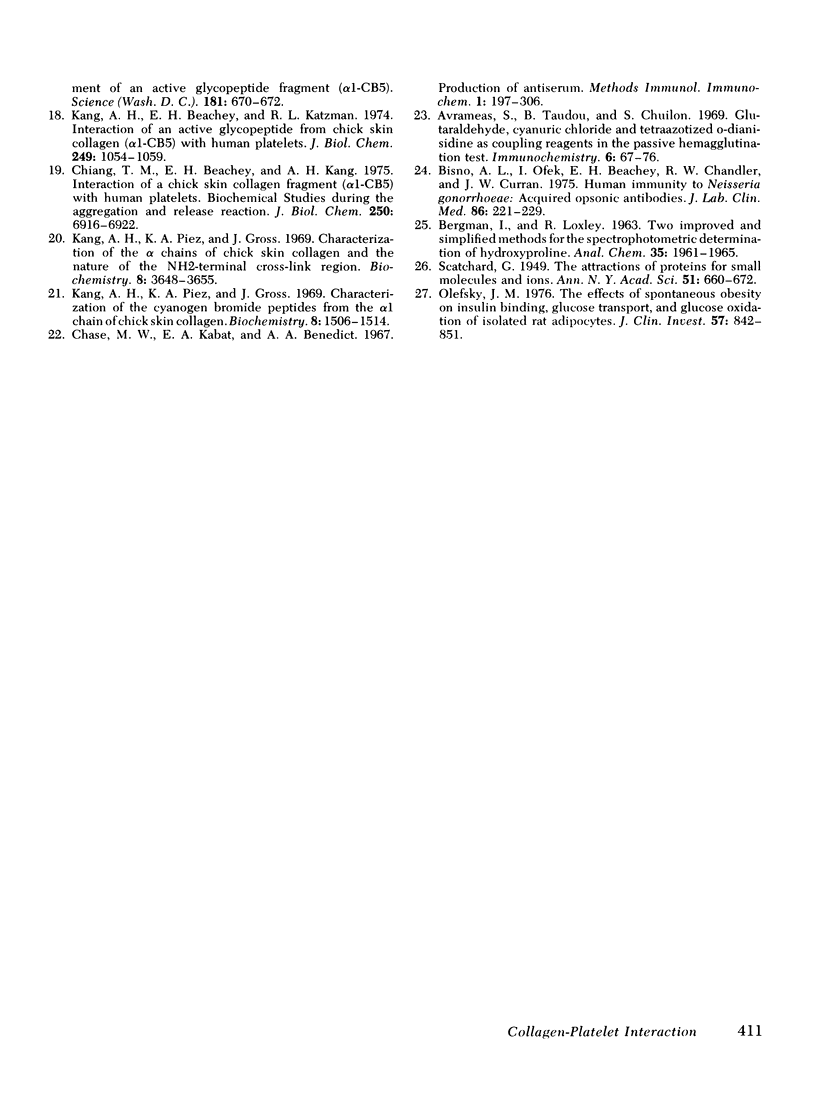
Images in this article
Selected References
These references are in PubMed. This may not be the complete list of references from this article.
- Ardlie N. G., Packham M. A., Mustard J. F. Adenosine diphosphate-induced platelet aggregation in suspensions of washed rabbit platelets. Br J Haematol. 1970 Jul;19(1):7–17. doi: 10.1111/j.1365-2141.1970.tb01596.x. [DOI] [PubMed] [Google Scholar]
- Avrameas S., Taudou B., Chuilon S. Glutaraldehyde, cyanuric chloride and tetrazotized O-dianisidine as coupling reagents in the passive hemagglutination test. Immunochemistry. 1969 Jan;6(1):67–76. doi: 10.1016/0019-2791(69)90179-7. [DOI] [PubMed] [Google Scholar]
- BORN G. V. Aggregation of blood platelets by adenosine diphosphate and its reversal. Nature. 1962 Jun 9;194:927–929. doi: 10.1038/194927b0. [DOI] [PubMed] [Google Scholar]
- Bisno A. L., Ofek I., Beachey E. H., Chandler R. W., Curran J. W. Human immunity to Neisseria gonorrhoeae: acquired serum opsonic antibodies. J Lab Clin Med. 1975 Aug;86(2):221–229. [PubMed] [Google Scholar]
- Chiang T. M., Beachey E. H., Kang A. H. Interaction of a chick skin collagen fragment (alpha1-CB5) with human platelets. Biochemical studies during the aggregation and release reaction. J Biol Chem. 1975 Sep 10;250(17):6916–6922. [PubMed] [Google Scholar]
- HOVIG T. AGGREGATION OF RABBIT BLOOD PLATELETS PRODUCED IN VITRO BY SALINE "EXTRACT" OF TENDONS. Thromb Diath Haemorrh. 1963 Jul 15;143:248–263. [PubMed] [Google Scholar]
- Holmsen H., Day H. J., Stormorken H. The blood platelet release reaction. Scand J Haematol Suppl. 1969;8:3–26. [PubMed] [Google Scholar]
- Jaffe R., Deykin D. Evidence for a structural requirement for the aggregation of platelets by collagen. J Clin Invest. 1974 Mar;53(3):875–883. doi: 10.1172/JCI107628. [DOI] [PMC free article] [PubMed] [Google Scholar]
- Kang A. H., Beachey E. H., Katzman R. L. Interaction of an active glycopeptide from chick skin collagen (alpha 1-CB5) with human platelets. J Biol Chem. 1974 Feb 25;249(4):1054–1059. [PubMed] [Google Scholar]
- Kang A. H., Piez K. A., Gross J. Characterization of the alpha-chains of chick skin collagen and the nature of the NH2-terminal cross-link region. Biochemistry. 1969 Sep;8(9):3648–3655. doi: 10.1021/bi00837a023. [DOI] [PubMed] [Google Scholar]
- Kang A. H., Piez K. A., Gross J. Characterization of the cyanogen bromide peptides from the alpha 1 chain of chick skin collagen. Biochemistry. 1969 Apr;8(4):1506–1514. doi: 10.1021/bi00832a029. [DOI] [PubMed] [Google Scholar]
- Mills D. C., Roberts G. C. Effects of adrenaline on human blood platelets. J Physiol. 1967 Nov;193(2):443–453. doi: 10.1113/jphysiol.1967.sp008369. [DOI] [PMC free article] [PubMed] [Google Scholar]
- Nachman R. L., Ferris B. Binding of adenosine diphosphate by isolated membranes from human platelets. J Biol Chem. 1974 Feb 10;249(3):704–710. [PubMed] [Google Scholar]
- Olefsky J. M. The effects of spontaneous obesity on insulin binding, glucose transport, and glucose oxidation of isolated rat adipocytes. J Clin Invest. 1976 Apr;57(4):842–851. doi: 10.1172/JCI108360. [DOI] [PMC free article] [PubMed] [Google Scholar]
- SPAET T. H., CINTRON J., SPIVACK M. Some properties of the platelet-connective tissue mixed agglutination reaction. Proc Soc Exp Biol Med. 1962 Nov;111:292–295. doi: 10.3181/00379727-111-27771. [DOI] [PubMed] [Google Scholar]
- SPAET T. H., ZUCKER M. B. MECHANISM OF PLATELET PLUG FORMATION AND ROLE OF ADENOSINE DIPHOSPHATE. Am J Physiol. 1964 Jun;206:1267–1274. doi: 10.1152/ajplegacy.1964.206.6.1267. [DOI] [PubMed] [Google Scholar]
- Tollefsen D. M., Feagler J. R., Majerus P. W. The binding of thrombin to the surface of human platelets. J Biol Chem. 1974 Apr 25;249(8):2646–2651. [PubMed] [Google Scholar]
- Tollefsen D. M., Jackson C. M., Majerus P. W. Binding of the products of prothrombin activation to human platelets. J Clin Invest. 1975 Jul;56(1):241–245. doi: 10.1172/JCI108075. [DOI] [PMC free article] [PubMed] [Google Scholar]
- Wilner G. D., Nossel H. L., LeRoy E. C. Aggregation of platelets by collagen. J Clin Invest. 1968 Dec;47(12):2616–2621. doi: 10.1172/JCI105944. [DOI] [PMC free article] [PubMed] [Google Scholar]



